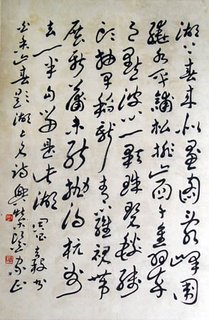
Lots of Taiwanese laugh at this picture because when they see the romanised letters on a sign they have already assumed that these were designed for foreigners. However, foreigners won't understand what it means unless they know the transcription system, Hanyu Pinyin, and know how to translate the script into English which will be "electric shock hazard". So Taiwanese make fun of the translation ability across the ocean. But what Taiwanese don't know is that these letters are not designed for foreigners but for those Mandarin speaking people who can't read Chinese. Mandarin is the formal language used in China, however, there are many tribes scattered all over China, each of them have developed a unique vernacular and writing, thus a national trascription system is needed to convey information between tribes. Not knowing this background, Taiwanese set a bad example of accusation.

The United Nations has been using simplifed (and not traditional) Chinese characters since the 1970s. Despite the political issue, not knowing the evolution history of Traditional Chinese and appreciating its creation, people are making the same mistake as Taiwanese did on the sign above. Scripts are the most important tools to record languages, and the change of a writ
ten language is in favor of simplicity. However, a complication is the methology in creation of a written language. When a character isn't able to give a straight forward meaning even more cause for confusion, complication is the simplest way to solve the problem. Traditional Chinese is a product of thousands of years of creation. It's in a perfect dynamic balance between simplicity and complexity. Each character is complex enough to be traced back to its origin of creation yet have been trimmed as much as possible to be used in writting.
The simplified Chinese is a product of recent decades, and the purpose is to make Chinese easier for users in writting, reading and studying. However, in the process Simplified Chinese has lost its embeded information. For example:
The word Noodle in ChineseTraditional: 麵 = 麥 + 面 (wheat + surface); Simplified: 面 (surface/face/noodle)
The Traditional form has two parts which helps to identify it as noodles. Simplified character only provides the pronouciation so the reader would be unable to determine the meaning without it's context.
(quoted from Say NO to United Nations' abolishment of Traditional Chinese in 2008.)
The Clarification of the petition:
The UN has been using simplifed (and not traditional) Chinese characters since the 1970s. That's when the official Chinese representation here switched from Taipei to Beijing.
Since Beijing used simplified characters in its official communications, that's the form that was adopted by the UN.
The UN never used both forms simultaneously. So these reports about a switch to simplified characters that will happen in 2008 are not correct. We already use simplified characters.
If you have any further questions, feel free to call me.
Best regards,
Brenden Varma
Office of the Spokesman for the Secretary-General United Nations, New York
The existence of two systems have their own backgrounds and purposes. They have been coexisting for decades and both scripts are ongoing an inevatable process of blending: Taiwanese are using simplified characters in writing, on the other hand, linguists in China are proposing complication to clarify the confusion caused by simplification. It's better off keep politics away, eventually allowing the two systems to find their own balance in a Unified Chinese Script.








